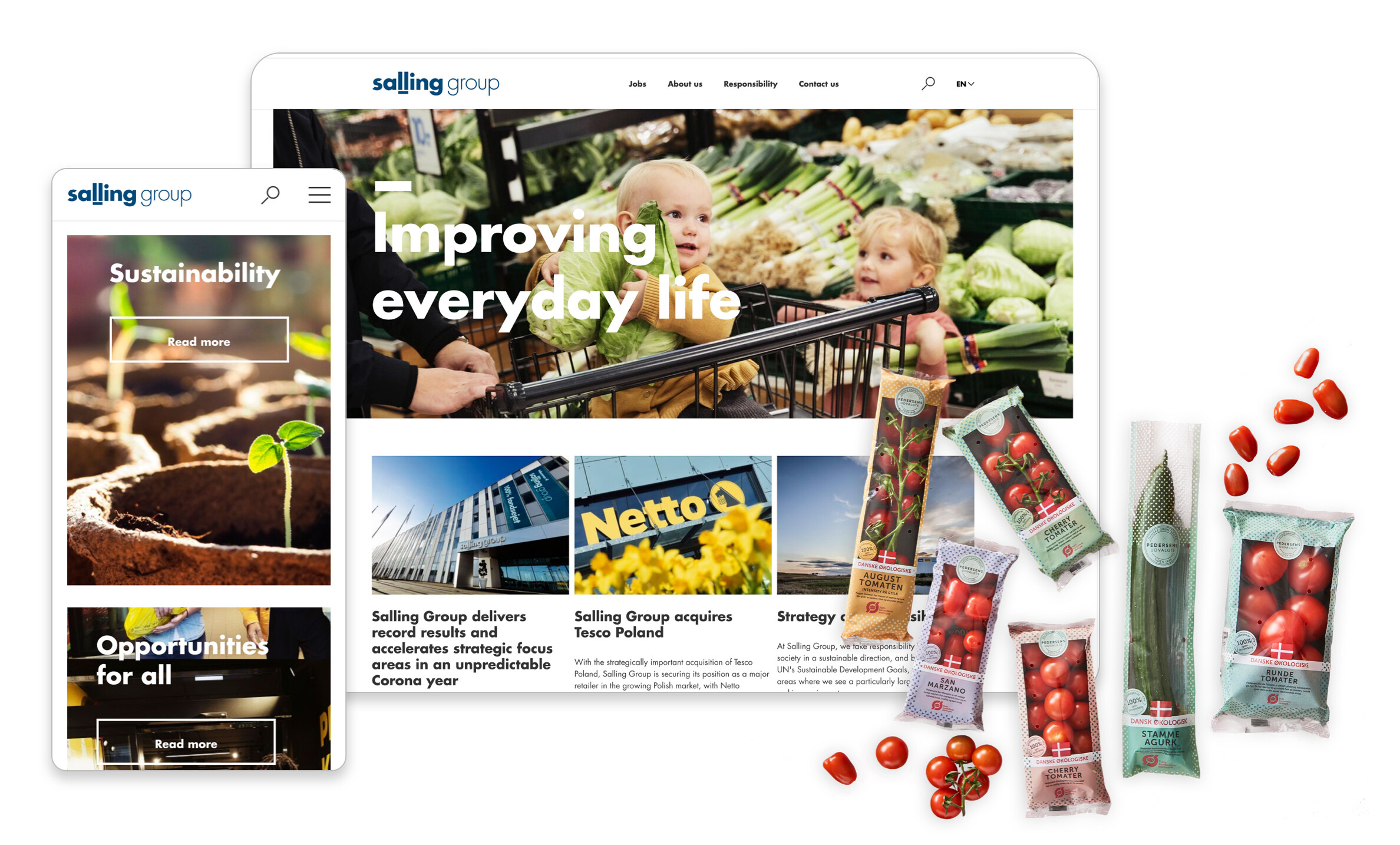

Salling Group aimed at strengthening its omnichannel experience to better serve customers across different touchpoints. Also, as the biggest retail chain in Denmark with multiple brands, it was imperative for the Salling Group to be scalable and cost-efficient.
However, Salling Group’s brands operated with SAP Hybris, an outdated commerce platform, leading to high licensing and maintenance costs. Moreover, to keep up with customer expectations, the Salling Group had to create workarounds on SAP to customize the experience. Not only was this highly inefficient, but it also required skilled developers that were hard to find and expensive to train.
As a starting point, Salling Group replaced their old monolithic SAP Hybris platform with commercetools Composable Commerce. This migration opened the doors to the multiple brands of the Group being able to take advantage of best-of-breed vendors in every aspect of commerce, using Magnolia for CMS, Vue Storefront for the frontend and Solr for search, as well as keeping the ERP solution powered by SAP intact.
This modernization made Salling Group faster and more agile in addressing customer expectations. For example, the Group recognized that traffic from mobile devices was increasing steadily, accounting for more than 60% of total traffic to all of their websites. With composable commerce, making UX designs responsive to a mobile-first customer base is now a breeze.
The move to composable commerce had yielded a significant impact on the Salling Group. First, webshops are operating at warp speed, with baskets having an astounding 140 milliseconds response time. Individual brands could add new touchpoints and countries in a frictionless manner. Data is now consolidated on one commerce engine that provides consistent pricing, product information and discounts across all touchpoints — achieving the Group's omnichannel goal from the beginning of this journey.
The modern commerce benefits came in handy during the pandemic. Salling Group seamlessly scaled to higher traffic volumes, supporting the 150% growth of a Click & Collect service and a 30% increase in line traffic without extra operational costs.
And speaking of lower costs, the Group reduced total costs of ownership (TCO) by 75% and time-to-market down to a two-month lead time thanks to consolidating its webshops under one commerce engine. Additionally, release cycles increased from once every other week to multiple times daily, and recruiting tech talent is now much easier.
Migrating to a composable architecture was absolutely the right move for Salling Group. Now we can respond to customer expectations and market changes a lot faster with such a flexible and scalable solution. We reduced operational costs massively by switching from SAP to commercetools, plus increased traffic, conversion rates and more. Composable really is the future of commerce for the Salling Group.
Digital Technology Chief, Salling Group
From 2 platform updates a year to daily platform and feature updates.
Consolidation of commerce data from 2 brands onto a single platform.
Frontend flexibility allowed API integration with Magnolia CMS.
